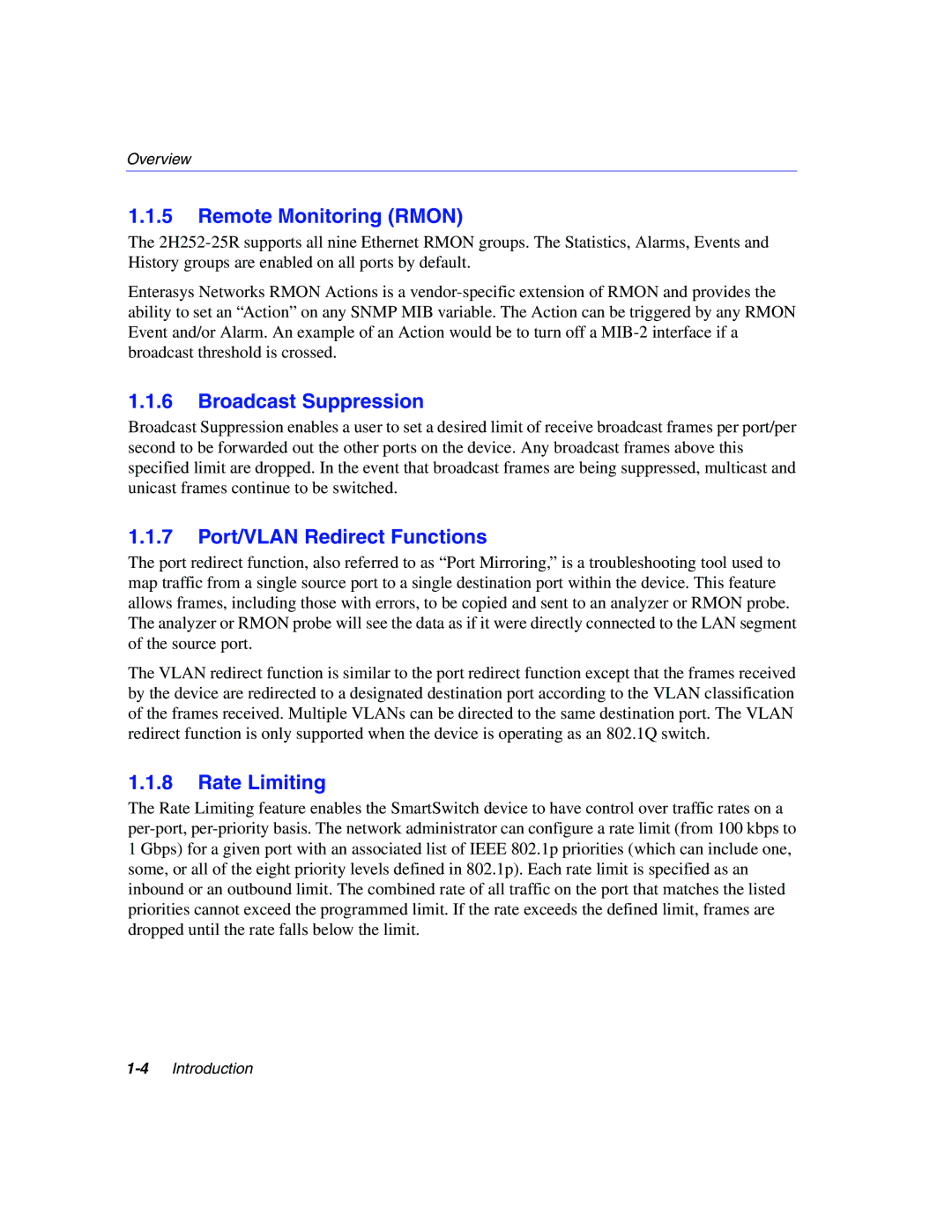Overview
1.1.5Remote Monitoring (RMON)
The
Enterasys Networks RMON Actions is a
1.1.6Broadcast Suppression
Broadcast Suppression enables a user to set a desired limit of receive broadcast frames per port/per second to be forwarded out the other ports on the device. Any broadcast frames above this specified limit are dropped. In the event that broadcast frames are being suppressed, multicast and unicast frames continue to be switched.
1.1.7Port/VLAN Redirect Functions
The port redirect function, also referred to as “Port Mirroring,” is a troubleshooting tool used to map traffic from a single source port to a single destination port within the device. This feature allows frames, including those with errors, to be copied and sent to an analyzer or RMON probe. The analyzer or RMON probe will see the data as if it were directly connected to the LAN segment of the source port.
The VLAN redirect function is similar to the port redirect function except that the frames received by the device are redirected to a designated destination port according to the VLAN classification of the frames received. Multiple VLANs can be directed to the same destination port. The VLAN redirect function is only supported when the device is operating as an 802.1Q switch.
1.1.8Rate Limiting
The Rate Limiting feature enables the SmartSwitch device to have control over traffic rates on a
